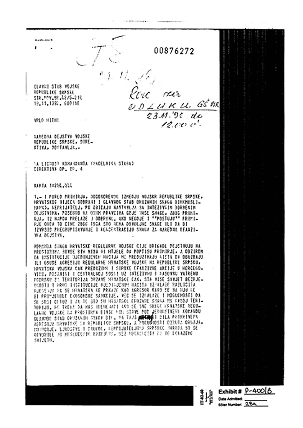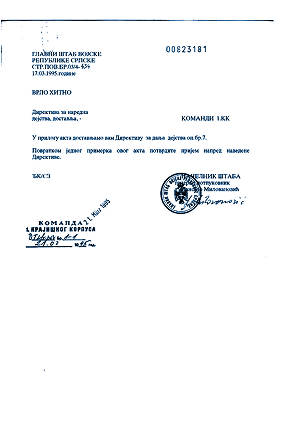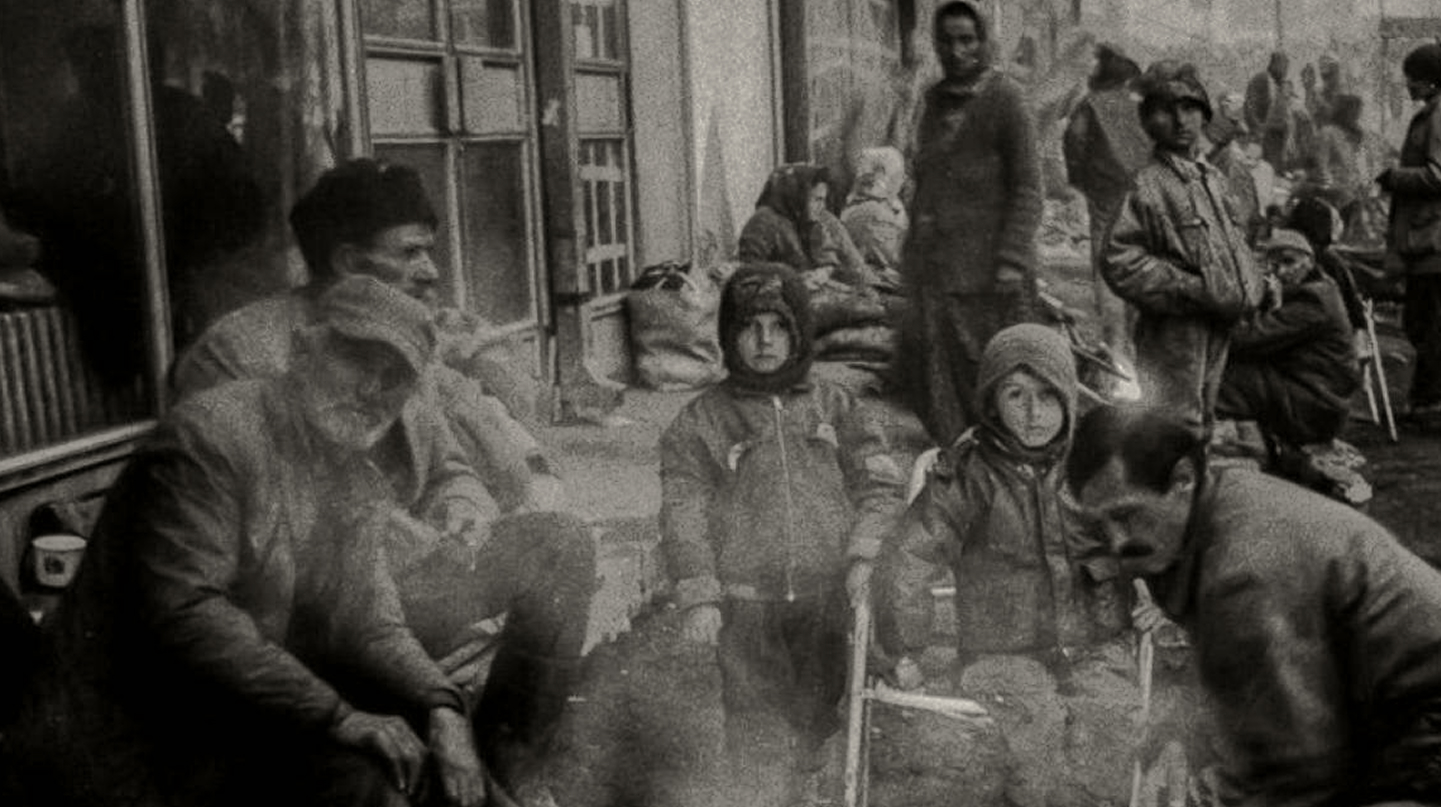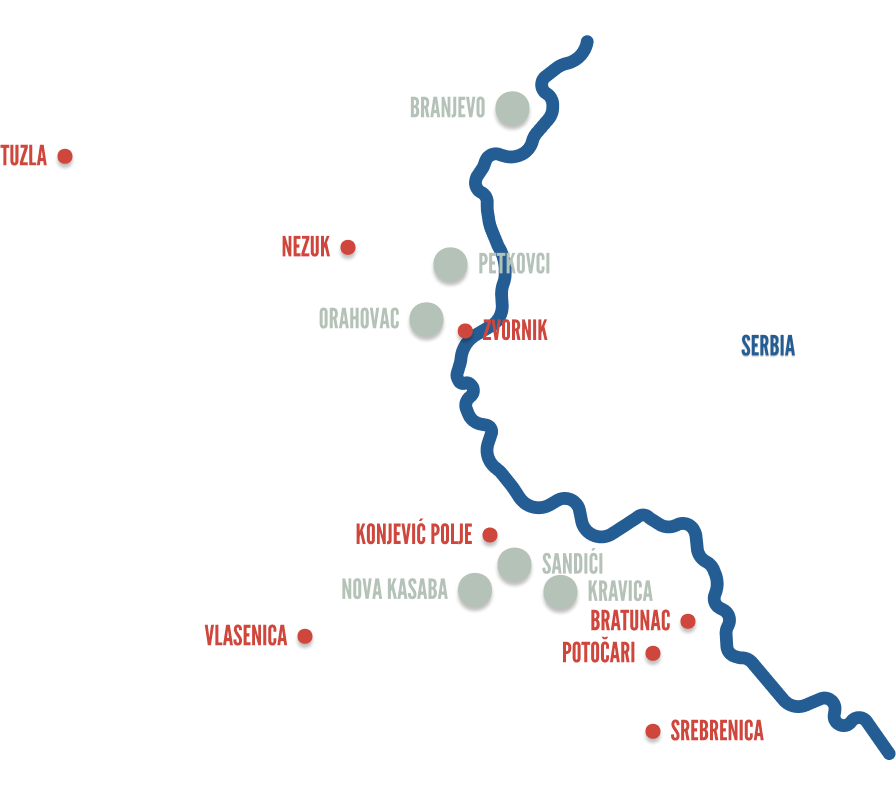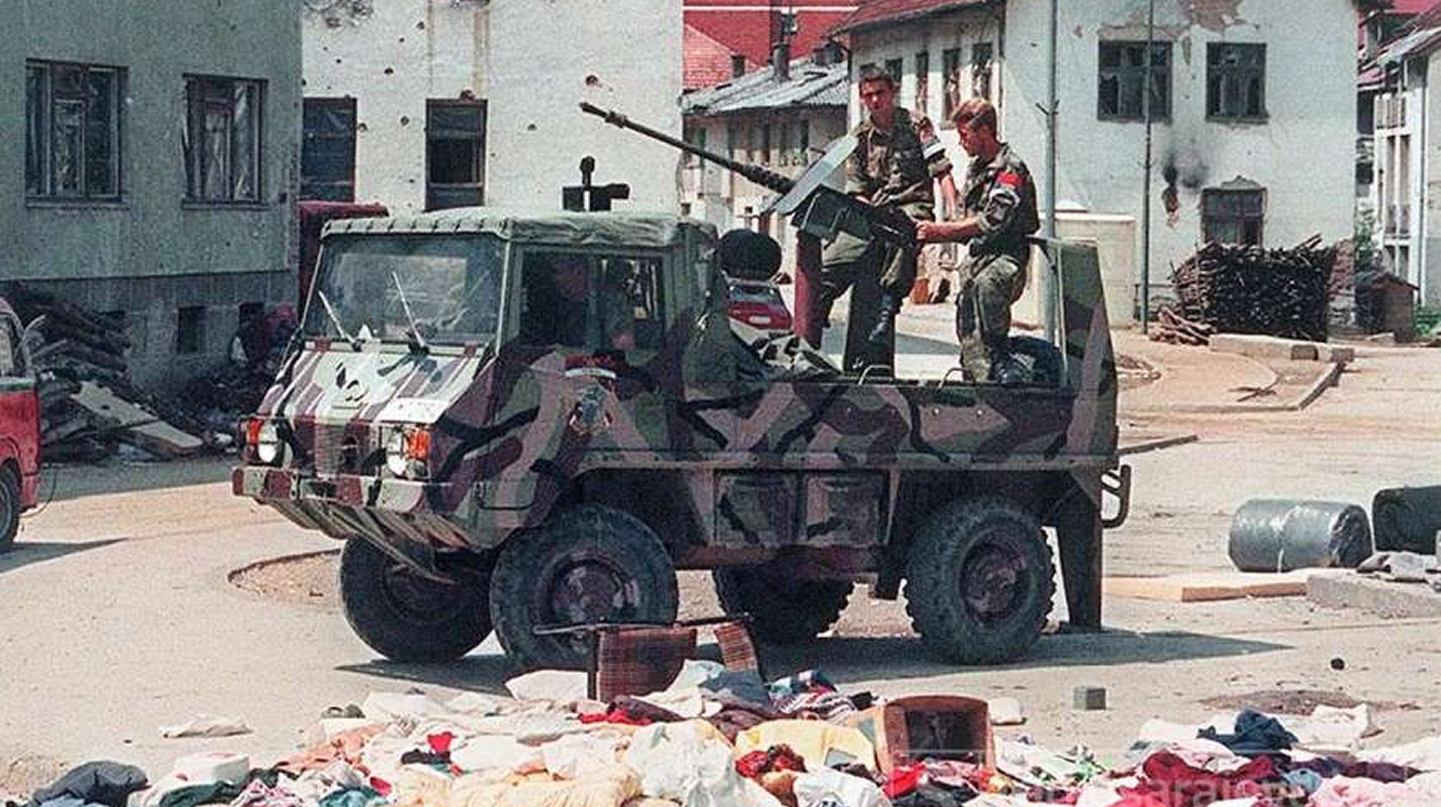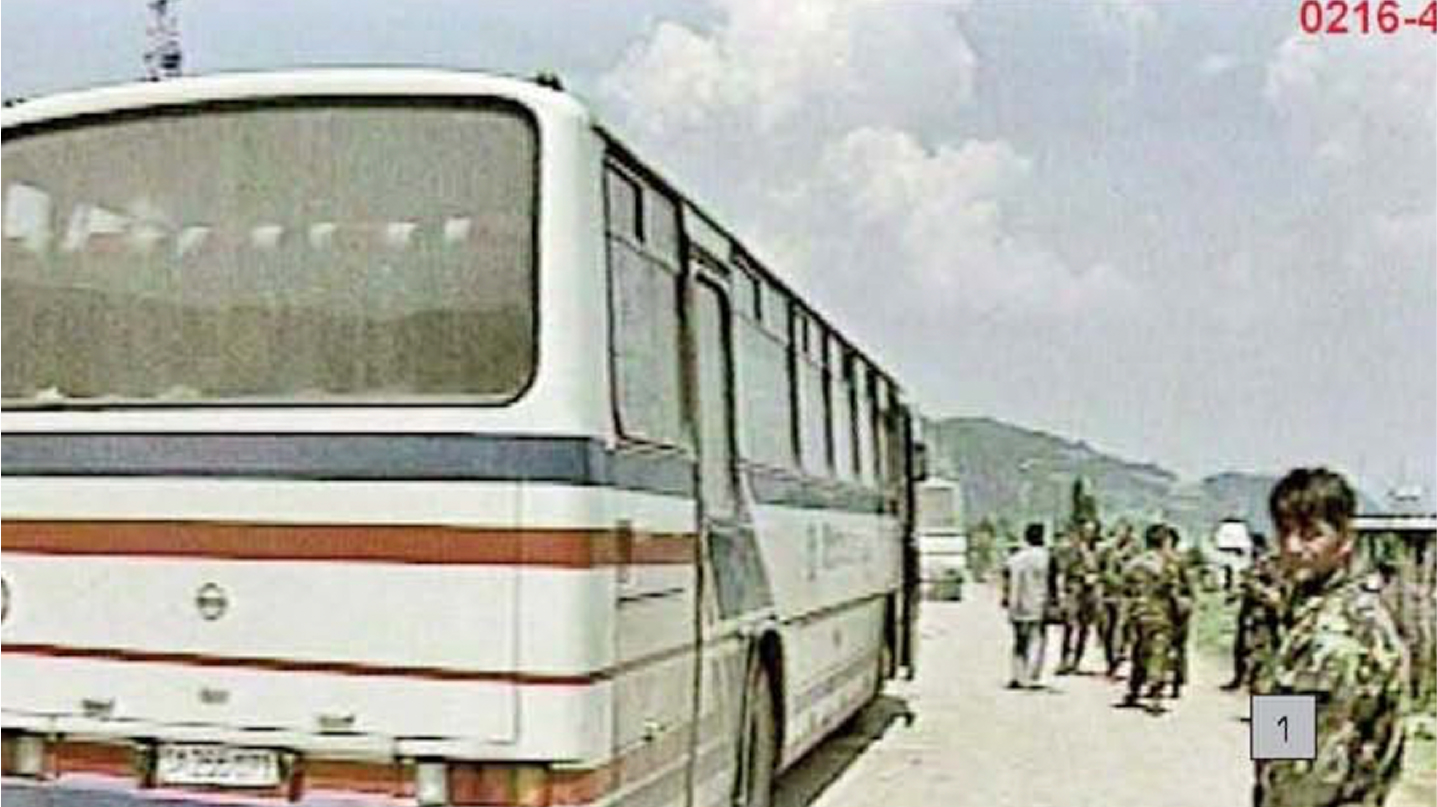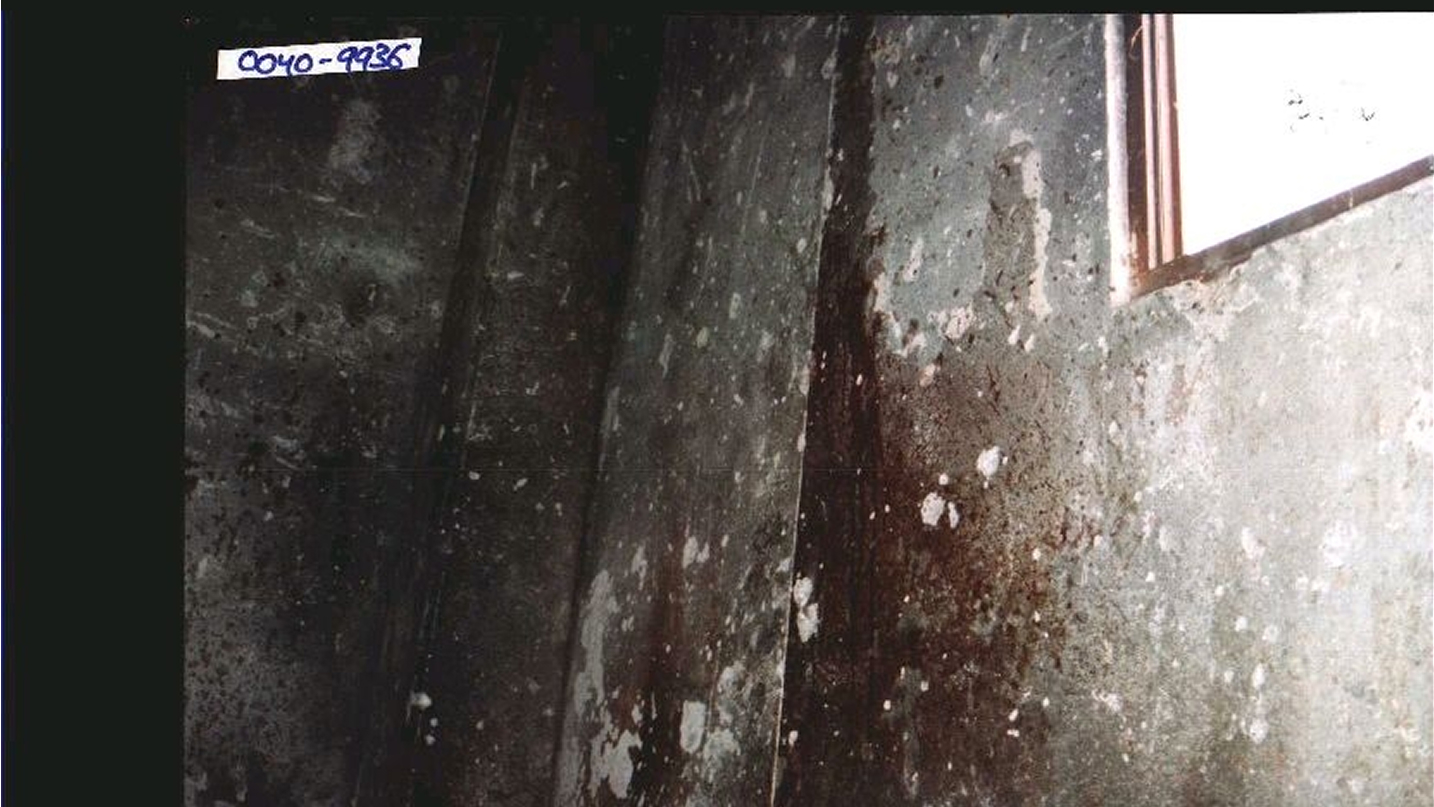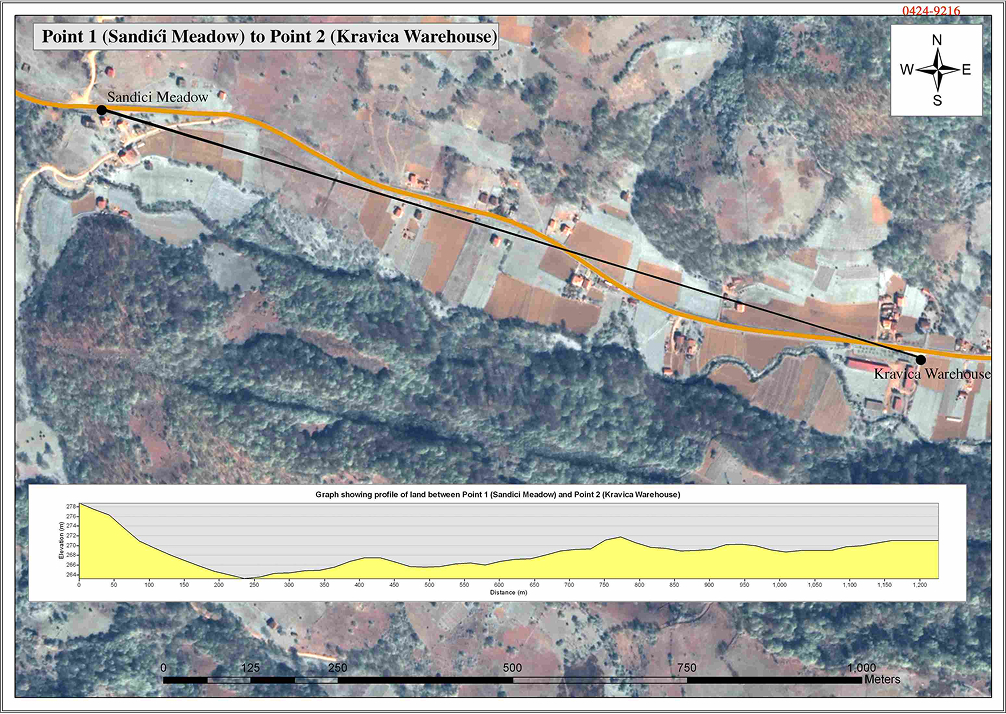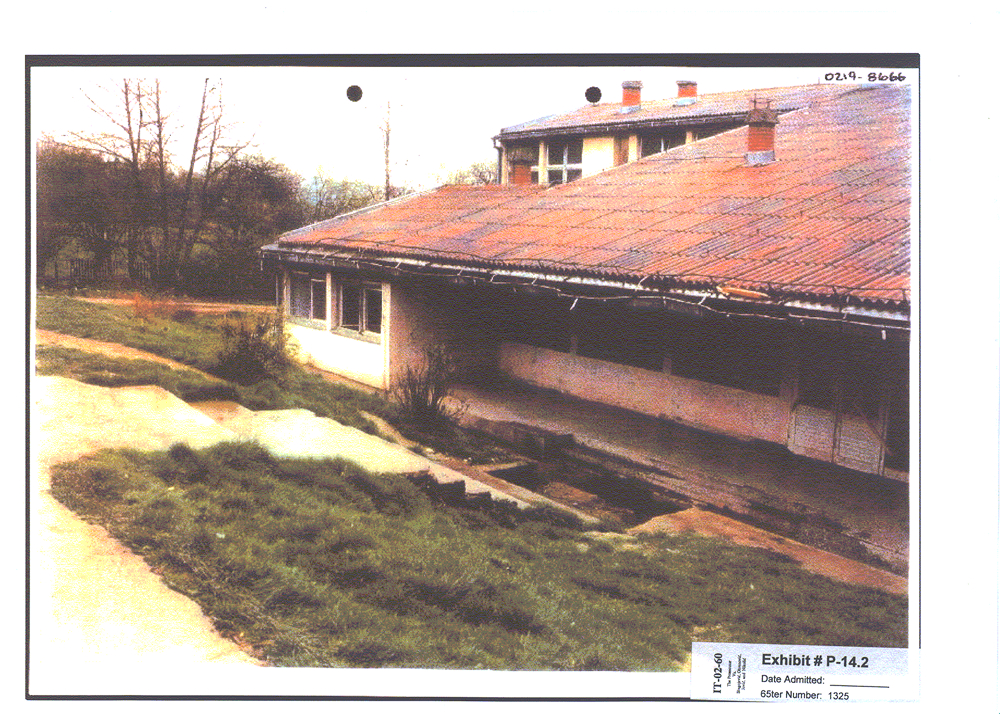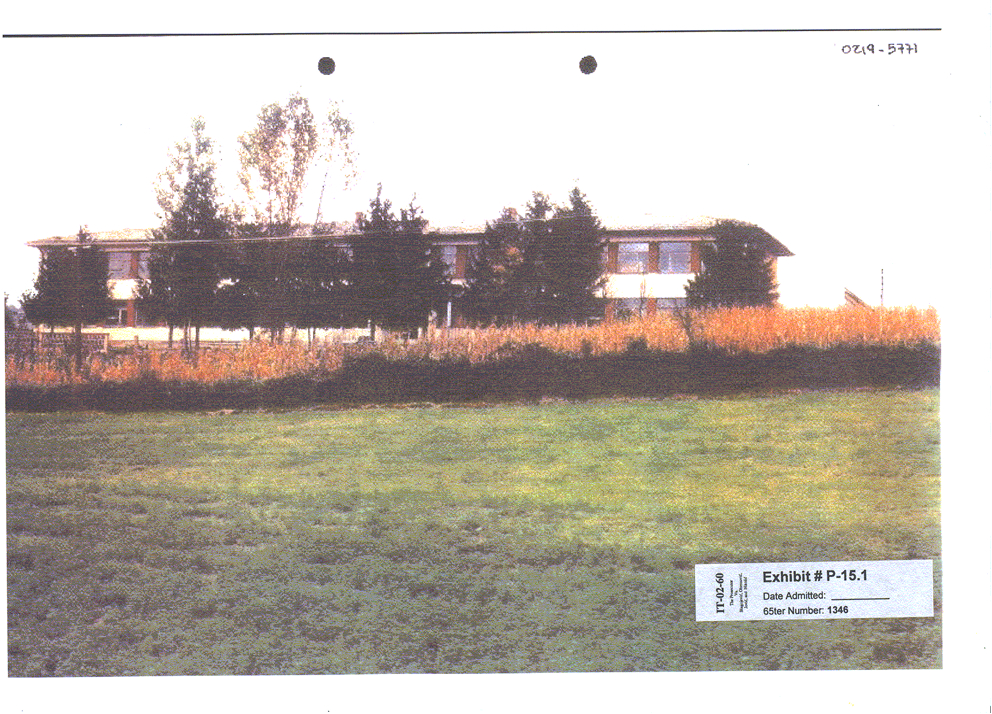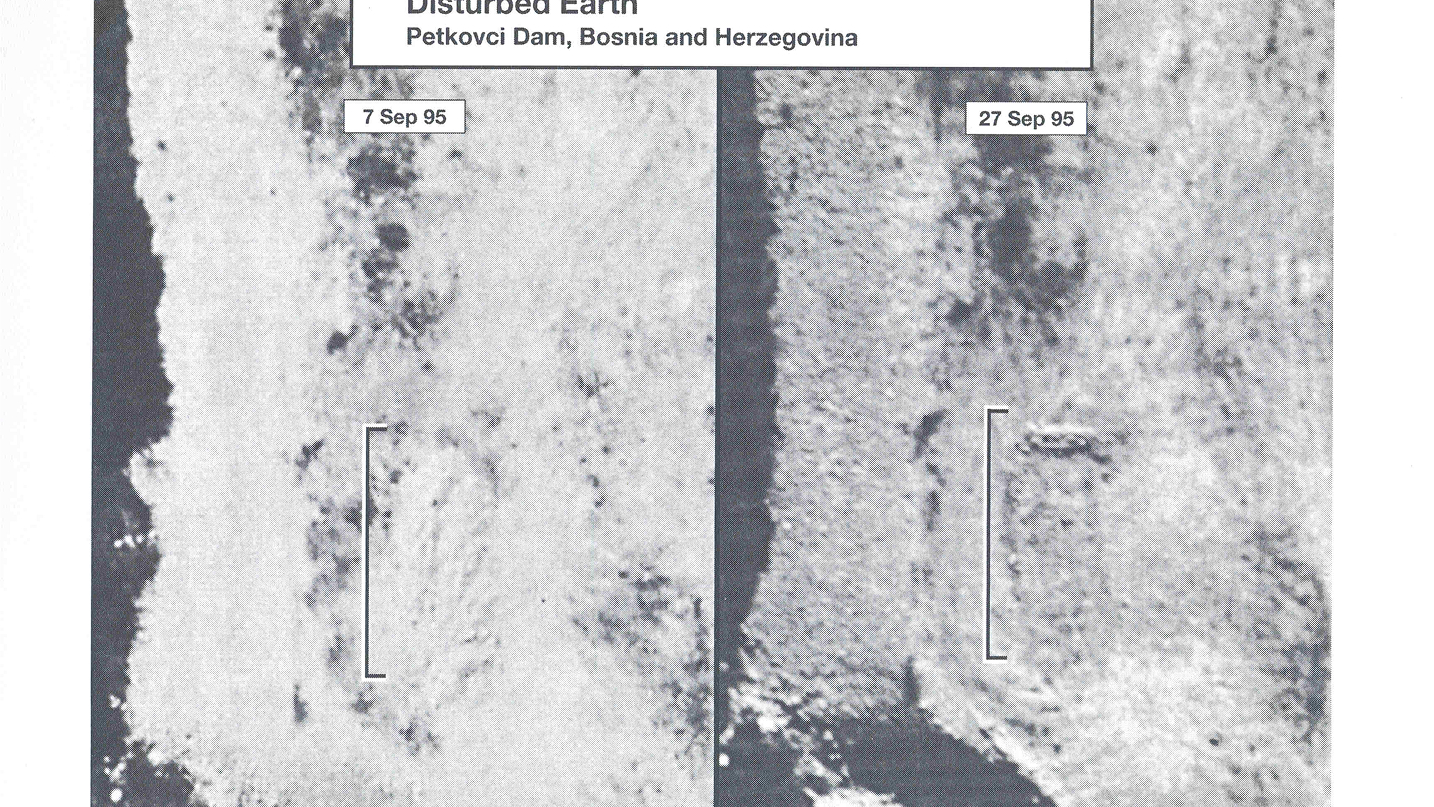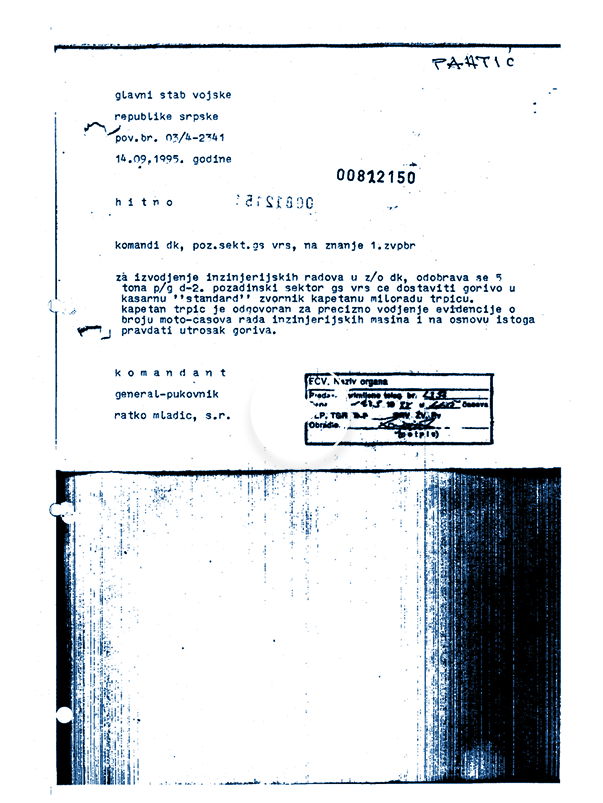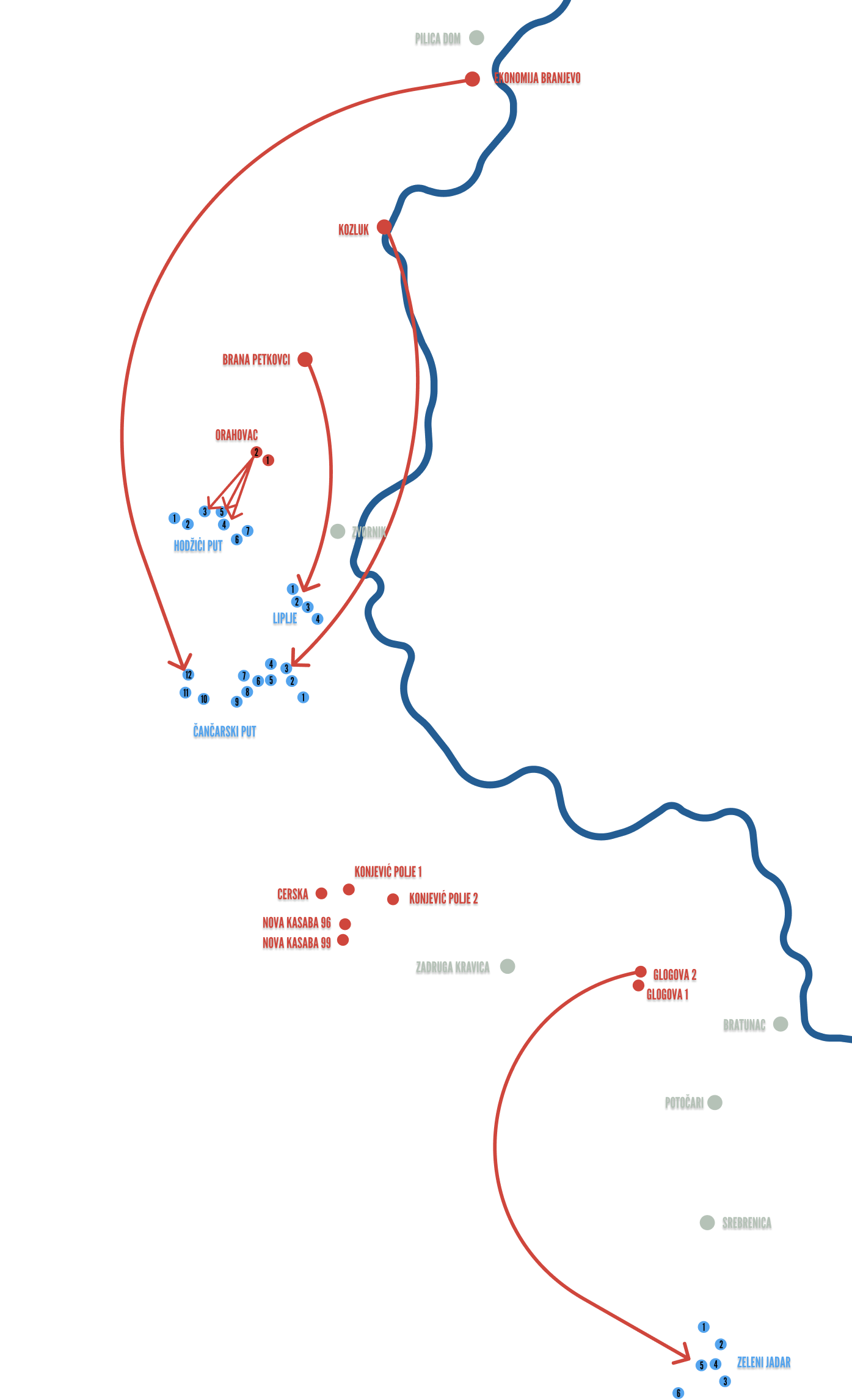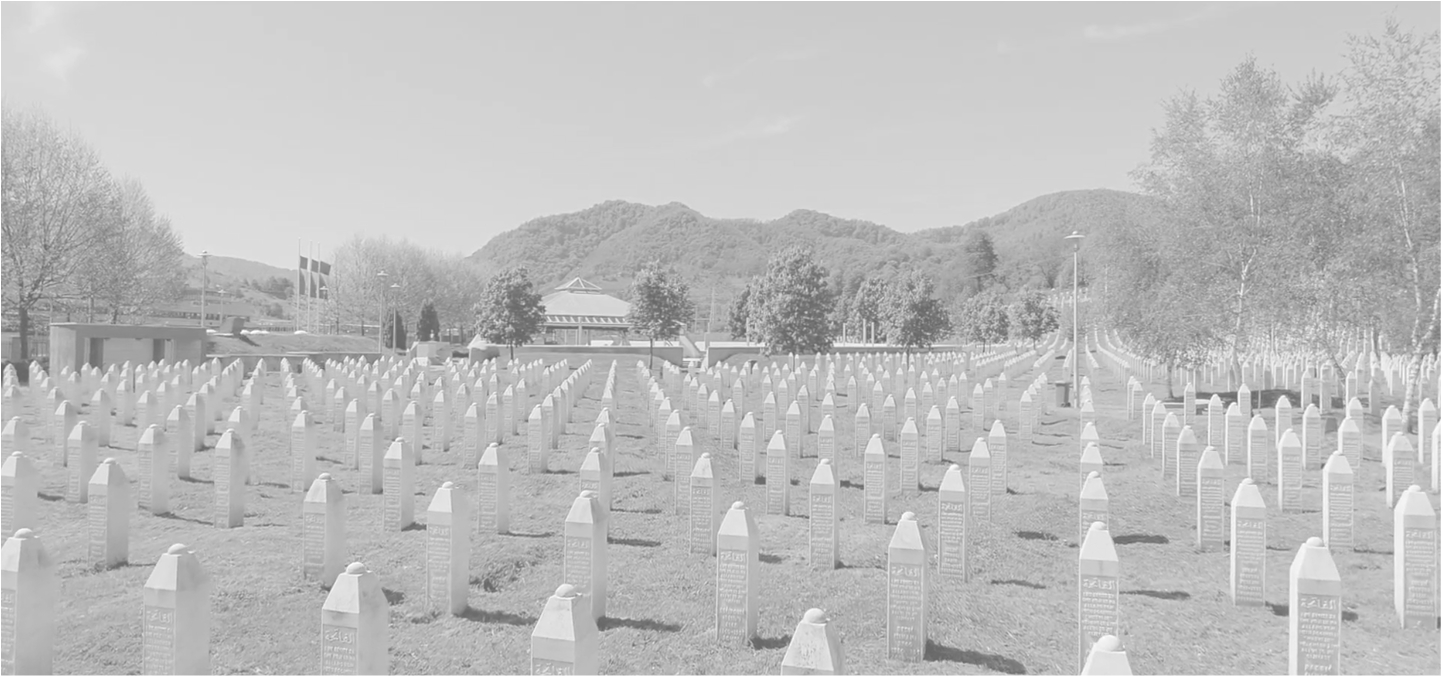About 1,500 men were taken from the meadow in Sandici to a warehouse in Kravica. They were pushed into the warehouse, after they were shot at and bombs were thrown. Years later, traces have remained on the walls.
Towards the evening of the 13th, Franc Kos went from the Command in Vlasenica towards Konjevic-Polje, and then to Bratunac. They stopped in Kravica, because some officers were there, he said. They were told that some people had been killed.
Momir Nikolić
“I saw a parked bus and dead people lying in front of the hangar,” Kos said while testifying before the Court of Bosnia and Herzegovina, also saying that there were perhaps about 20 bodies in front of the hangar.
He said that from the entrance, he saw people moaning and crying out inside.
While cross-examining the prosecution’s investigator Dusan Janc during the trial in 2012, Radovan Karadzic admitted that there were prisoners in Kravica, but played down the number. He said that, according to his information, there were only about 150 prisoners in Kravica. He also claimed that “there was no planned and prepared execution” in Kravica, but that the prisoners were killed following an incident in which a Bosniak had grabbed a rifle from a Serb guard and killed him.
Petar Mitrovic, who was convicted of genocide, said before the Court of Bosnia and Herzegovina that, in liner with order to secure the road, he spent two days in the vicinity of the hangar in Kravica with the Second Special Police Detachment from Sekovici.
He said there were no killings in that period, but after an incident, he saw dead people in front of the hangar.
“The lives of police officers were endangered. I did not see the incident. I heard later that someone had taken a rifle and that 15 to 20 people had been killed. They were members of the 28th Bosniak Division, not civilians,” Mitrovic said.
And while many others called the Kravica crime an incident, justified it or diminished it in other ways, Vaso Todorovic, a former member of a Special Police Detachment from Sekovici, signed a plea agreement before the Court of Bosnia and Herzegovina and admitted that, on July 13, 1995, he participated in the capture and murders of more than 1,000 Bosniaks in the hangar in Kravica.
Milivoje Cirkovic admitted that on the following day, July 14, 1995, in his capacity as member of the Jahorina Training Centre of the Interior Ministry of Republika Srpska, acting on the order of his commander, he killed one civilian by shooting him in the back, in the vicinity of the Kravica Agricultural Cooperative (Bratunac municipality).
July 13 - Nova Kasaba, Zvornik and Bratunac
On July 13, the captured men were also taken to Konjevic-Polje, and to a football field in Nova Kasaba.
During the night, a large number of prisoners were held in the Vuk Karadzic school, from where they were taken out and beaten up, while some were taken away and killed, as well as on the Jadar River, where 17 men were shot dead. On the same day, a number of men were killed in Cerska, and a mass grave containing about 150 bodies was found nearby.
Many were transferred to Zvornik and the area around it, where numerous crimes were committed.
Momir Nikolić
July 14
A large group of prisoners who were held in Bratunac overnight were taken in a convoy of buses to a school in Grbavci, near Orahovac, in the early morning of July 14, 1995. Between 1,000 and 2,500 people were executed.
Nikolic confirmed that, in the morning of July 14, the escorting of “Muslim refugees in a convoy going to Zvornik” was organised.
Drago Nikolic i Vinko Pandurevic
During his testimony in The Hague, Nikolic was shown a daily report by the Military Police Unit of the First Bratunac Light Infantry Brigade (on screen 49:52). The page referring to July 14 and 15 states that the police were engaged in escorting Muslim refugees. Nikolic said that, on the morning of the 14th, the Bratunac Brigade Police, or parts of it, participated in escorting Muslim refugees in a convoy going to Zvornik. When asked who this referred to, he said: “These were Muslims who had been separated in Potocari on July 12 and 13, and Muslims who had been captured on the Bratunac-Kravica-Konjevic-Polje route during those days, and transferred to Bratunac, which means that all the Muslims who had been captured on that route and placed in Vuk Karadzic school and other facilities were transported by buses and trucks to Zvornik on the 14th.”
He said that Miroslav Deronjic insisted that the prisoners be taken to Zvornik. Deronjic, the president of the Crisis Staff in Bratunac, who was sentenced to ten years in prison, has since died.
“All the officers knew about the killings in the Zvornik area,” Nikolic claimed during one of his testimonies.
Dragan Obrenovic said that, in the evening of the 13th, he learned that the prisoners would be brought to the Zvornik area, which was conveyed to him over the phone by Drago Nikolic on the orders of Popovic, he testified. Nikolic was sentenced to 35 years in prison. He has since died.
“The order was to not take these prisoners to the Batkovic detention camp, because the Red Cross and UNPROFOR knew about it, but to bring them to Zvornik and shoot them there,” he said, adding that Drago Nikolic conveyed to him that he should provide support.
“I said we could not accept such obligation without the knowledge of our commander and superior command, to which he replied that Mladic personally had ordered it, that everyone knew about it, including Lieutenant-Colonel Pandurevic, and that Beara and Popovic personally would carry it out,” Obrenovic, deputy commander of the Zvornik Brigade of the Republika Srpska Army, said.
Obrenovic was asked to put the military police company at his disposal.
“I told him I had deployed them to an ambush ... Then he asked for at least the company commander, Miomir Jasikovac, with at least one military police squad, to which I said I would see what I could do,” Obrenovic said, adding that, by agreeing to put part of the military police at his disposal, he practically approved their participation in these operations.
July 15
A large group of prisoners was taken to a school in Petkovci on July 14. On July 15, about 800 people were taken to the dam in Petkovci and killed. More prisoners from Bratunac were transported by buses to a school in the village of Pilica, north of Zvornik, where several men died due to heat and dehydration in the school gym, while some were taken out, after which gunfire was heard. They did not return.
Stanisic was sentenced to five years in Bosnia and Herzegovina for aiding the genocide.
“He mentioned to me that a group of soldiers had been shot in the new school in Petkovci the day before, right inside the school and in the facilities around the school, that he had engaged his rear detachment to drive the people away, and to clean up later on ... he was annoyed,” Obrenovic said.
July 16
“When the bus arrived at the farm, as I said, Brano Gojkovic, the group commander, told us how to set up a firing squad, and two military policemen took groups of ten Muslims from Srebrenica out of the bus, and Brano Gojkovic and Vlastimir Golijan then brought them to the firing squad.”
This is what Drazen Erdemovic said in November 1996, describing the shooting at the Branjevo farm on July 16, 1995, in which he participated alongside other members of the Tenth Reconnaissance Squad.
He used a Kalashnikov, and, as the perpetrators themselves confirmed, on that day they also killed people from Srebrenica with a light machine gun (M84 machine gun).
“They took half of the bus out, and took them there, to the field, near the machine gun ... The lad fired … We stood there,” Franc Kos said, claiming that Zoran Goronja operated the machine gun.
Goronja told the Court of Bosnia and Herzegovina that the Slovenian (Franc Kos) told him that someone should be on duty at the machine gun, to which he agreed, thinking that there was no need to use it. In the end, he said he was shooting.
“The execution of those people started normally,” Goronja said.
But people did not die immediately, so they shot at them again.
“I personally shot people in the head,” Kos said, and the buses kept coming until between 1,000 and 1,500 people were killed on the farm.
“It was like in a movie; I felt completely terrified. … Franc took a rifle, went up to these people - I am now telling the real truth, not the one he told - and Isaid: ‘A lot of ammunition is being wasted, from now on we we’ll do it like this: one man, one bullet to the back of the head,’” Stanko Kojic told the State Court, also saying that when he heard Erdemovic protest, he protested too.
Pripadnici 10. Diverzantskog voda o strijeljanjima na Branjevu
Many of the participants said they had to carry out this task, so as not to be killed themselves, and Erdemovic stated that they were subsequently sought for the murders in Pilica, at the Cultural Centre, which he refused to carry out. About 500 captives were killed at the Cultural Centre in Pilica, while some of the accessories to the killings at Branjevo were having drinks in Ljubo’s Cafe across the street to cool off.
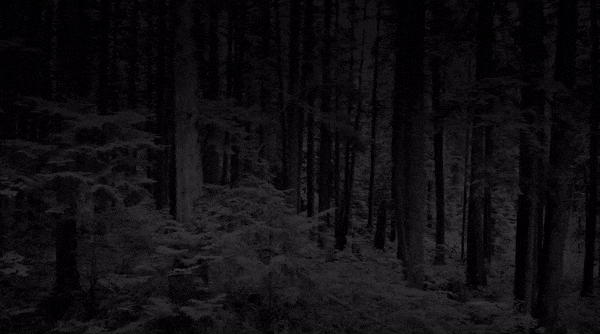
_1.jpg)
